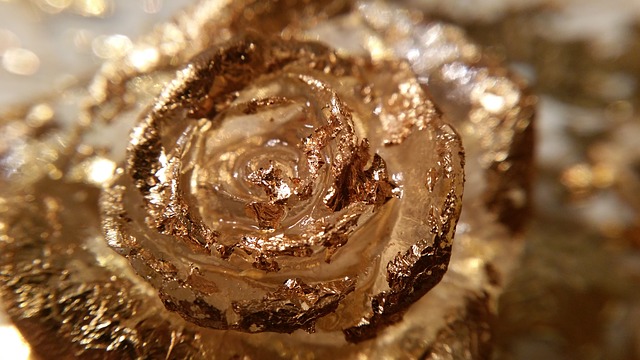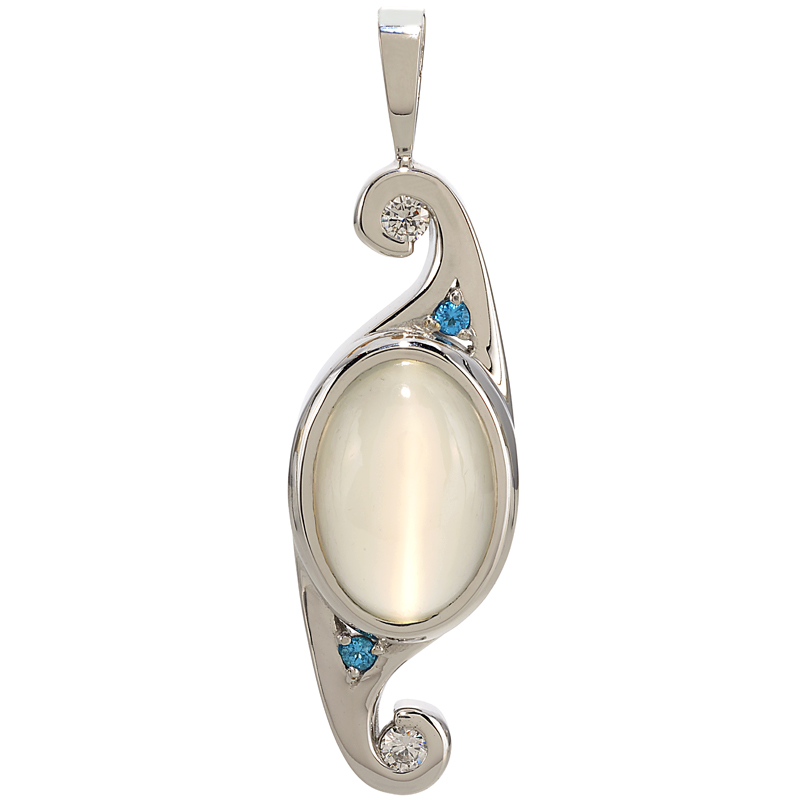
Natural gold’s unique yellow color makes it easily recognizable, as seen in the above picture and in our yellow gold jewelry. White gold was originally developed as a more affordable alternative to platinum. White gold is an alloy created by adding whitening metals to ‘bleach’ yellow gold, giving it an overall white hue. A variety of metals have been used to create white gold from natural yellow gold, including nickel, palladium, silver, tin, platinum and manganese. Copper may also be added for malleability and zinc is then used as a secondary bleaching agent to reduce the copper color. Because pure gold is very yellow, no matter the type or amount of bleaching metal that’s mixed with it, the white gold alloy will almost certainly retain some slight degree of yellowish color. The range of white gold alloy tones have been described as creamy white to gunmetal white.
White gold jewelry may be thought of as possessing this dazzling silver hued metal so bright and reflective it almost appears chrome-like. That’s because the white gold alloy described above, with its range of warm yellow-tinted white colors, is frequently plated with a microscopic layer of rhodium (a precious metal from the platinum-group) to give it an extremely bright white sheen. Rhodium, as in my moonstone and apatite pendant in 14 kt white gold seen below, is silver-hued, highly reflective and does not tarnish.

Rhodium coating white gold alloys is done for a couple reasons. First is aesthetics. The chrome-like color of rhodium is very close to the icy white of diamonds. This makes it hard to tell where diamonds start and the metal ends, which can create the illusion the diamonds are larger or more plentiful than they really are. Also, the jewelry shines brighter because the microscopic rhodium coating may help hide blemishes in the white gold alloy.
The other reason for coating white gold alloys is rhodium’s hypoallergenic properties. Nickel, one of the bleaching agents used in white gold alloys, causes allergic skin reactions, such as rashes, in some people. Plating the jewelry with a microscopic layer of rhodium prevents the wearer’s skin from contacting the nickel-containing white gold alloy.
The thin layer of rhodium plating will, however, over time wear away, exposing the true color of the underlying white gold alloy and the wearer with nickel allergies to the nickel-containing gold alloy. Your jewelry item will begin to lose its chrome-like look, showing slight yellowish tinges. This is particularly true of rings, which are subject to more banging and scratching than other jewelry pieces.The good news is, whether the issue is one of aesthetics, a nickel allergy or both, your rhodium plated white gold jewelry can be safely re-plated and restored to its original condition.
At 100 East Fine Jewelry, for those of who prefer the warmer tones of white gold alloys, some of our jewelry pieces are not rhodium plated. We disclose on each white gold jewelry piece’s Product Detail sheet if it’s rhodium treated. All our white gold jewelry is made from an alloy containing nickel. If you are interested in an item that is not rhodium plated but because of a nickel allergy or simply a preference for the look of rhodium plating, we will, at no additional charge, plate the piece for you. The coating process does not damage gemstones in the jewelry piece, but will add to delivery time. Unfortunately, once a jewelry piece is rhodium plated, it cannot be removed.
Rose gold is another alloy of yellow gold. It gets its reddish color by mixing copper and silver with natural yellow gold. The amount of copper and silver can vary, depending on the depth of the desired rose color.
Because white gold and rose gold are, by definition alloys, there is no such thing as 24 kt white or rose gold.

